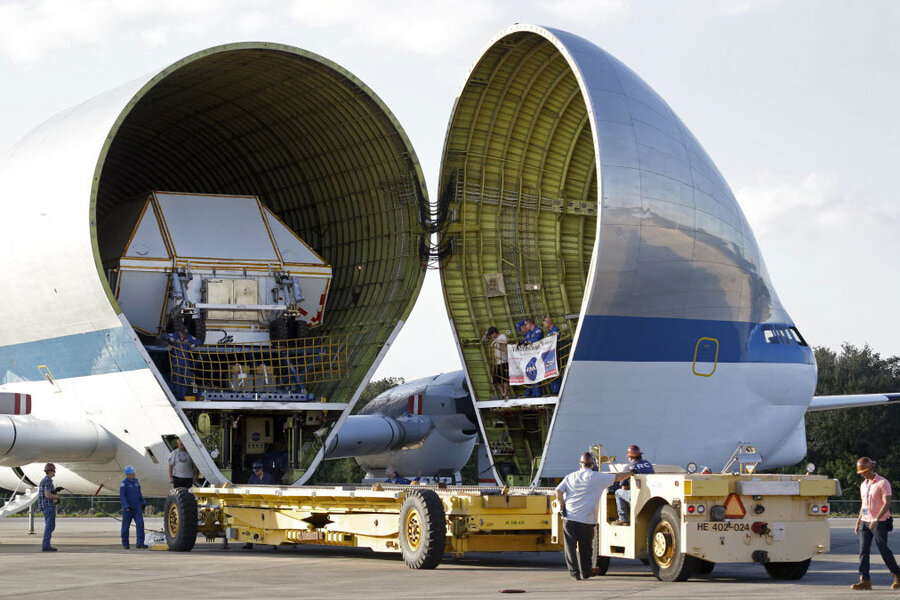NASA moves closer to sending humans to deep space
Loading...
NASA takes another step toward sending humans past the moon, to Mars and perhaps beyond.
The space agency announced Monday that the Orion spacecraft pressure vessel, an underlying structure that seals off a chamber for astronaut life support, is ready for transport. The unit will travel in NASA's Super Guppy aircraft from the Michoud Assembly Facility in New Orleans where it was built to the Kennedy Space Center in Florida.
Once in Florida, the pressure vessel still faces a barrage of tests before it is added to the assemblage that will be the Orion spacecraft, a craft designed specifically to carry astronauts to deep space, with a special eye on Mars.
When the unit was completed in mid January, Mike Sarafin, manager of Orion's first mission, said in a statement, "We’ve started off the year with an key step in our process to get ready for Exploration Mission-1, when together Orion and SLS will travel farther than a spacecraft built for humans has ever traveled ... This brings us closer to our goal of testing our deep space exploration systems in the proving ground of lunar space before we begin sending astronauts days to weeks from Earth."
Exploration Mission-1 will not carry astronauts, but will be a sort of test run for Orion and NASA's Space Launch System (SLS) rocket. In this first mission, Orion is set to soar farther than any spacecraft built for humans has before, out beyond the moon.
This first trip, set to be about three weeks long, will give engineers a chance to evaluate the spacecraft before humans climb aboard. They will use the area just past the moon, the lunar vicinity, as a space to test how Orion's technologies in an environment more similar to deep space than Earth's orbit.
"This is a mission that truly will do what hasn’t been done and learn what isn’t known," Mr. Sarafin said in a statement in November 2015. "It will blaze a trail that people will follow on the next Orion flight, pushing the edges of the envelope to prepare for that mission."
The Exploration Mission-1 won't be the first test flight for Orion. In 2014, the Orion spacecraft was launched past low-Earth orbit by the Delta IV "heavy" rocket in its first test flight. The new SLS rocket is designed to be the most powerful rocket this world has ever seen, specifically for shooting astronauts to new depths of space.






